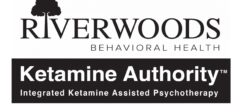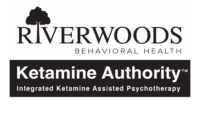Resources and Relevant Studies
Esketamine: new hope for the treatment of treatment-resistant depression? A narrative review
The overall findings demonstrated that treatment with intranasal esketamine in combination with a new oral antidepressant was more effective than placebo plus an oral antidepressant, and associated with a rapid reduction of depressive symptoms and delayed time to relapse from symptoms of depression.76,78Consistent with the short-term esketamine studies, the long-term safety study showed that the esketamine doses studied were generally well tolerated, with no new safety concerns with dosing up to 52 weeks.
https://www.ncbi.nlm.nih.gov/pmc/articles/PMC7383653/
Ketamine treatment for depression: a review
Despite the preliminary nature of the evidence described above, a small number of studies have examined the promising effects of ketamine combined with psychotherapy for treating disorders other than depression, including alcohol, heroin, cocaine, and cannabis abuse [69–72]. Ketamine was found to have benefits in treating substance addiction and dependence, increasing abstinence rates, reducing relapse rates, and decreasing cravings. Taken together, the positive findings from these preliminary studies suggest that the methodology involved in ketamine-assisted psychotherapy is presently evolving; additional studies are needed to optimize its use.
https://www.ncbi.nlm.nih.gov/pmc/articles/PMC9010394/
The Impact of Childhood Maltreatment on Intravenous Ketamine Outcomes for Adult Patients with Treatment-Resistant Depression
Childhood maltreatment is associated with a poor treatment response to conventional antidepressantsandincreasedriskfortreatment-resistantdepression(TRD). TheN-methyl-D-aspartate receptor (NDMAR) antagonist ketamine has been shown to rapidly improve symptoms of depression inpatients with TRD. It is unknown if childhood maltreatment could influence ketamine’s treatment response. We examined the relationship between childhood maltreatment using the Childhood Trauma Questionnaire (CTQ) and treatment response using the Quick Inventory of Depressive Symptoms–Self Report (QIDS-SR) in TRD patients receiving intravenous ketamine at a community outpatient clinic. We evaluated treatment response after a single infusion (n = 115) and a course of repeated infusions (n = 63). Repeated measures general linear models and Bayes factor (BF) showed significant decreases in QIDS-SR after the first and
second infusions, which plateaued after the third infusion. Clinically significant childhood sexual abuse, physical abuse, and cumulative clinically significant maltreatmenton multiple domains (maltreatment load) were associated with better treatment
response to a single and repeated infusions. After repeated infusions, higher load was also associated with a higher remission rate. In contrast to conventional antidepressants, ketamine could be more effective in TRD patients with more childhood trauma burden, perhaps due to ketamine’s proposed ability to block trauma-associated behavioral sensitization.
Ketamine as an antidepressant: overview of its mechanisms of action and potential predictive biomarkers
There has been increasing interest surrounding ketamine in recent years, largely owing to its rapid antidepressant and anti-suicidal properties in patients with treatment resistant disorder (TRD) and its unique mechanism of action. The preclinical and clinical studies
to date have led to further understanding of its use in psychiatry, and this will continue to be an active area of research as more investigations are conducted to determine optimum conditions for ketamine treatment in patients for examples of very recent studies on comparisons of single, repeated and maintenance ketamine infusions on TRD and suicidal ideation in TRD).
Ketamine as an antidepressant: overview of its mechanisms of action and potential predictive biomarkers
There has been increasing interest surrounding ketamine in recent years, largely owing to its rapid antidepressant and anti-suicidal properties in patients with treatment resistant disorder (TRD) and its unique mechanism of action. The preclinical and clinical studies
to date have led to further understanding of its use in psychiatry, and this will continue to be an active area of research as more investigations are conducted to determine optimum conditions for ketamine treatment in patients for examples of very recent studies on comparisons of single, repeated and maintenance ketamine infusions on TRD and suicidal ideation in TRD).
Ketamine for Depression
Findings from studies examining the effect of a single dose of IV ketamine infusion in depression have also been summarised in meta-analyses. One meta-analysis examined nine studies 234 patients with MDD and bipolar depression and demonstrated that ketamine reduced depression significantly more than placebo/active placebo. A further meta-analysis examined the effects of a single dose of ketamine on depressed patients who had suicidal ideation at baseline and demonstrated that ketamine rapidly (within 1 day) reduced suicidal ideation.

